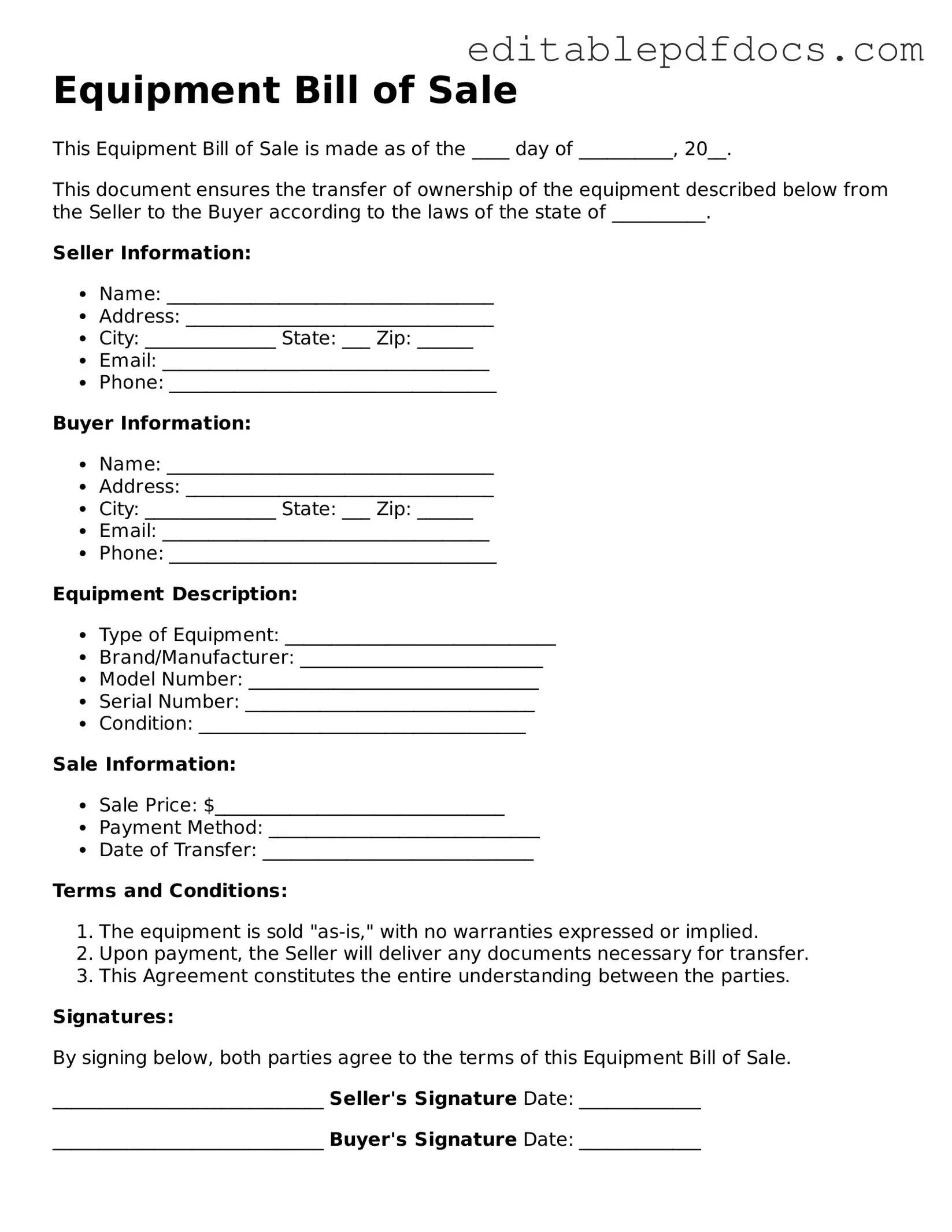Filling out an Equipment Bill of Sale form can seem straightforward, but many people stumble over common mistakes that can lead to complications down the line. One frequent error is failing to provide complete information about the equipment being sold. It’s essential to include details such as the make, model, serial number, and condition of the item. Omitting these details can create confusion and disputes later on.
Another common mistake is neglecting to include both the buyer's and seller's full legal names and addresses. This information is crucial for establishing the identities of both parties involved in the transaction. If this information is incomplete or incorrect, it can lead to challenges in enforcing the sale or transferring ownership.
People often overlook the importance of specifying the sale price clearly. While it may seem obvious, writing the amount in both numerical and written form can prevent misunderstandings. For instance, if someone writes “$1,000” but then mistakenly writes “one thousand five hundred” in the text, it could lead to disputes. Clarity is key.
Another pitfall is failing to sign and date the form. A Bill of Sale without signatures lacks legal standing. Both parties must sign to acknowledge their agreement to the terms. Additionally, dating the document is vital, as it establishes when the transaction took place, which can be important for tax and warranty purposes.
Some individuals forget to include any warranties or disclaimers regarding the equipment. If the seller is offering a warranty or if the item is sold “as is,” this should be clearly stated in the document. This helps set the right expectations and protects both parties from potential disputes.
Lastly, many people fail to keep a copy of the completed Bill of Sale for their records. After all, this document serves as proof of the transaction and can be important for future reference, such as for tax purposes or if any issues arise with the equipment. Keeping a copy ensures that both parties have access to the terms agreed upon.
